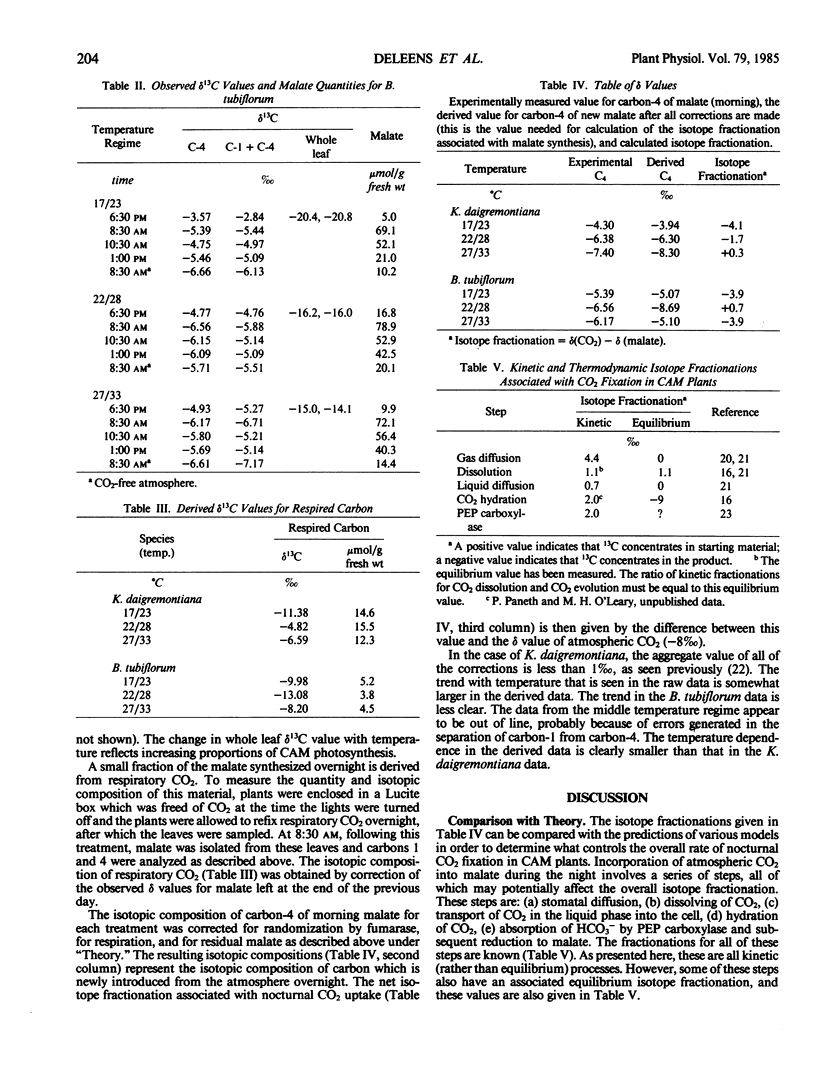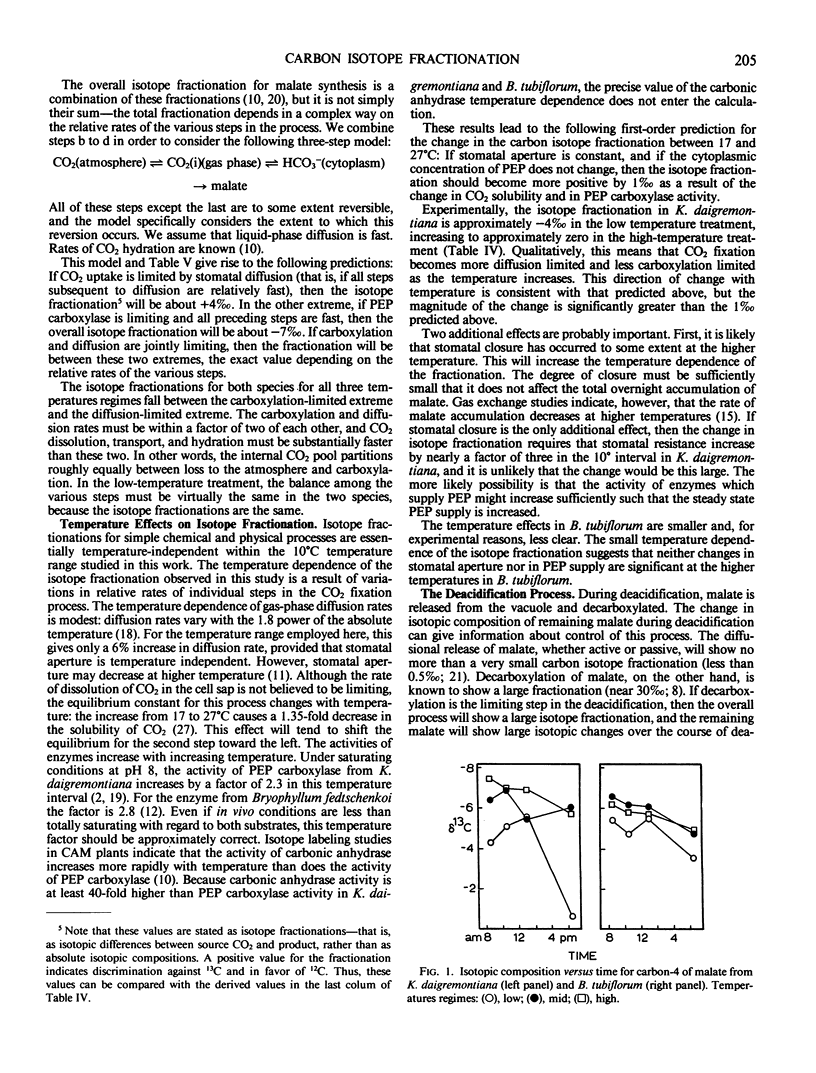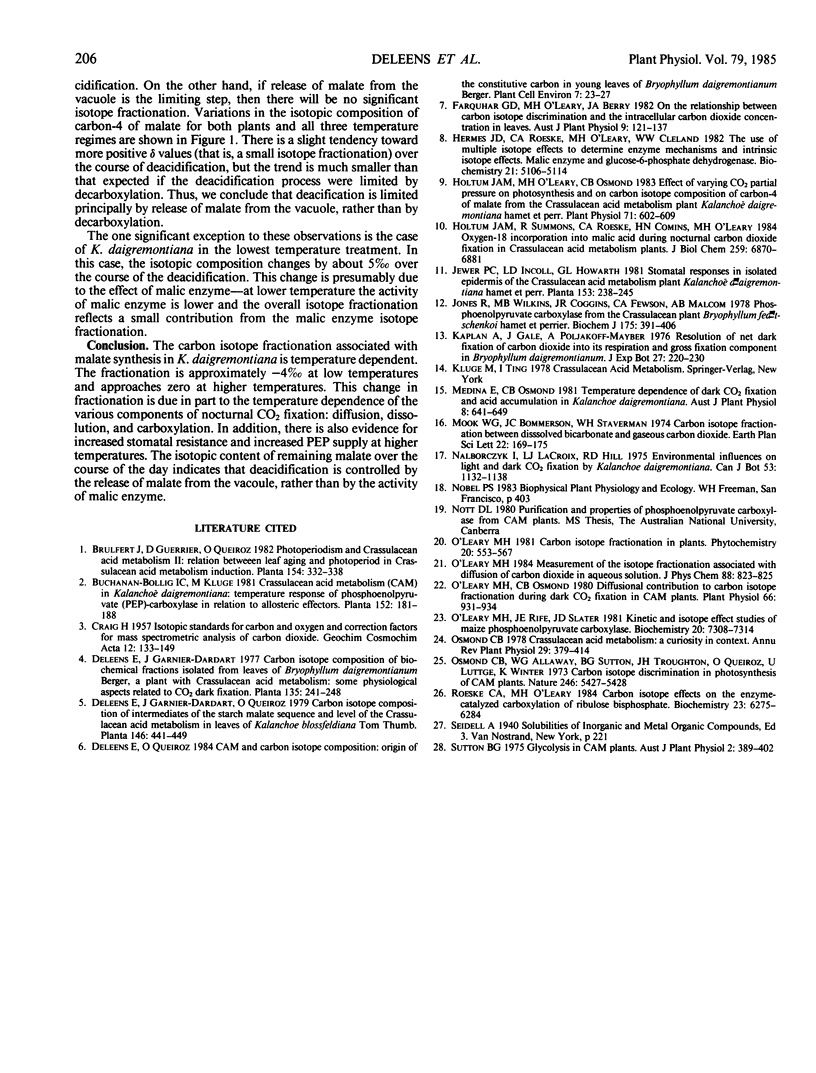Abstract
The carbon isotope fractionation associated with nocturnal malic acid synthesis in Kalanchoë daigremontiana and Bryophyllum tubiflorum was calculated from the isotopic composition of carbon-4 of malic acid, after appropriate corrections. In the lowest temperature treatment (17°C nights, 23°C days), the isotope fractionation for both plants is −4‰ (that is, malate is enriched in 13C relative to the atmosphere). For K. daigremontiana, the isotope fractionation decreases with increasing temperature, becoming approximately 0‰ at 27°C/33°C. Detailed analysis of temperature effects on the isotope fractionation indicates that stomatal aperture decreases with increasing temperature and carboxylation capacity increases. For B. tubiflorum, the temperature dependence of the isotope fractionation is smaller and is principally attributed to the normal temperature dependences of the rates of diffusion and carboxylation steps. The small change in the isotopic composition of remaining malic acid in both species which is observed during deacidification indicates that malate release, rather than decarboxylation, is rate limiting in the deacidification process.
Full text
PDF




Selected References
These references are in PubMed. This may not be the complete list of references from this article.
- Hermes J. D., Roeske C. A., O'Leary M. H., Cleland W. W. Use of multiple isotope effects to determine enzyme mechanisms and intrinsic isotope effects. Malic enzyme and glucose-6-phosphate dehydrogenase. Biochemistry. 1982 Sep 28;21(20):5106–5114. doi: 10.1021/bi00263a040. [DOI] [PubMed] [Google Scholar]
- Holtum J. A., O'leary M. H., Osmond C. B. Effect of Varying CO(2) Partial Pressure on Photosynthesis and on Carbon Isotope Composition of Carbon-4 of Malate from the Crassulacean Acid Metabolism Plant Kalanchoë daigremontiana Hamet et Perr. Plant Physiol. 1983 Mar;71(3):602–609. doi: 10.1104/pp.71.3.602. [DOI] [PMC free article] [PubMed] [Google Scholar]
- Holtum J. A., Summons R., Roeske C. A., Comins H. N., O'Leary M. H. Oxygen-18 incorporation into malic acid during nocturnal carbon dioxide fixation in crassulacean acid metabolism plants. A new approach to estimating in vivo carbonic anhydrase activity. J Biol Chem. 1984 Jun 10;259(11):6870–6881. [PubMed] [Google Scholar]
- Jones R., Wilkins M. B., Coggins J. R., Fewson C. A., Malcolm A. D. Phosphoenolpyruvate carboxylase from the crassulacean plant Bryophyllum fedtschenkoi Hamet et Perrier. Purification, molecular and kinetic properties. Biochem J. 1978 Nov 1;175(2):391–406. doi: 10.1042/bj1750391. [DOI] [PMC free article] [PubMed] [Google Scholar]
- O'Leary M. H., Rife J. E., Slater J. D. Kinetic and isotope effect studies of maize phosphoenolpyruvate carboxylase. Biochemistry. 1981 Dec 8;20(25):7308–7314. doi: 10.1021/bi00528a040. [DOI] [PubMed] [Google Scholar]
- O'leary M. H., Osmond C. B. Diffusional Contribution to Carbon Isotope Fractionation during Dark CO(2) Fixation in CAM Plants. Plant Physiol. 1980 Nov;66(5):931–934. doi: 10.1104/pp.66.5.931. [DOI] [PMC free article] [PubMed] [Google Scholar]


